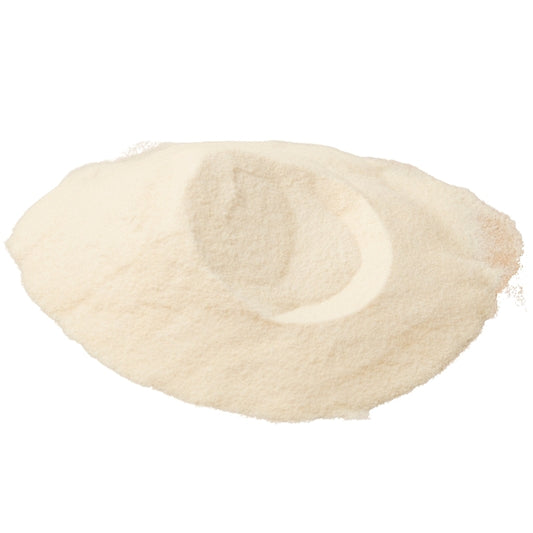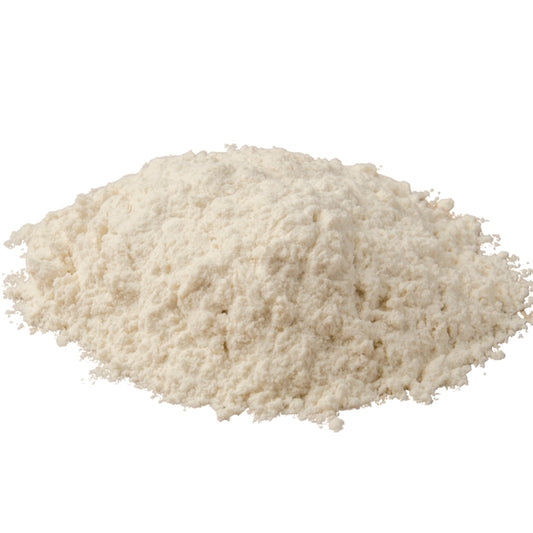
Fun with Plant-Based Gels
Juliette van der MeerSomething that I have been playing around with recently is gel. It's wobbly and cooling and glides over skin, and my inner child just loves the textural experience!
Gels have a myriad of uses as they are water based, sink into the skin well but also wash off easily. There is no greasy oil, and the ingredients used to make the gel are all plant based and food grade. Gels also make great carriers for essential oils and other nutritious elements that may need to be diluted. I like to use it as a 'carrier' for essential oil blends rather than actual carrier oils, because there is zero greasiness.
Whether you want to use gels for cosmetics, in cooking, or even as a textural plaything for your toddler, plant-based gels are awesome, 100% natural and chemical free. Below we explain the different gelling agents and the benefits of each.
Natural products that are gelling agents:
Xanthan gum
Xanthan gum is a polysaccharide derived from the fermentation process of the bacterium Xanthomonas campestris, which is found in a variety of plant-based sources. It makes a fantastic neutral, clear gel that is extremely versatile.
Irish sea moss/carrageen
This is full of minerals, vitamins, amino acids and antioxidants, to name a few, sea moss is a powerful ingredient. It is most often used in food recipes, but can also be applied to skin or hair.
Flaxseed
Flaxseed has great hold as a hair gel! Flaxseeds are rich in omega-3 fatty acids, which is great for hair and skin, as a deficiency in this essential acid can leave hair and skin dry, flaky and dull. Flaxseed gel is wonderfully nourishing and moisturising, and doesn't have a 'crunch' when left in hair. It is ideal as a hair gel for those with curly and natural hair, but is perfectly suitable for all hair types.
Hydroxyethyl cellulose
A thickening gum derived from plants (pine and spruce), hydroxyethyl cellose (HEC) creates beautiful clear gels. It is ideal to use in skincare products where a gel consistency is required.
Basic Gel Recipes
Xanthan Gum Gel
Ingredients:
- 0.5-1% xanthan gum (how much you use determines how thick you gel will be)
- 2-3% vegetable glycerine
- If you plan on keep your gel for more than a day or two, add 1% Geogard 221
- Water to 100%
Method:
- Blend the xanthan gum and the glycerine together to create a slurry. The glycerine helps 'hydrate' the gum and makes working with it easier (ie. fewer lumps to squash out).
- Prepare the water by mixing it with the preservative first. I find blending the water and preservative first helps get it well dispersed for maximum coverage against fungi and bacteria.
- Drizzle the water little by little over the paste, blending constantly. Using an immersion/stick blender works well here.
- Continue adding water and blending until you are happy with the gel consistency.
Feel free to adjust the recipe to make larger batches. I also find once the xanthan gum is gelled, a little goes a looong way. The tiniest amount on your finger will spread quite far on your skin. For best results, leave the gel to 'prove' for a couple of hours or overnight before using it. The gelatinous network only gets better with time. You can store it in a cool spot or in the fridge for many months if it is properly preserved.
Flax Gel
Ingredients:
- ¼ c flax seeds
- 2 c water
Method:
- Boil the flax seeds in the water for about 10 minutes until you get a 'mucous trail' or consistency like raw egg whites (sorry, this sounds gross but that's how it is!) when you stir a spoon through.
- Remove from the heat and leave the gel in the pot to cool for 30 - 60 minutes. This allows it to thicken up to an even consistency and cool down. It will still have flax seeds in it so you need to filter it:
Take a clean pair of stockings or some cheesecloth (or any other thing you can squeeze through), pour the gel into it and squeeze it through. - Decant your gel into a pump bottle or jar and store in the fridge for up to 2 weeks.
- Flax gel is ultra moisturising and can be used as the perfect hair gel or as a cosmetic gel. Some even say it works better than conventional hair gels.
Irish Sea Moss Gel
- Rinse the dried moss thoroughly.
- Soak it in a jar filled up with water for a couple of hours. It will expand considerably, so a little dried moss makes quite a bit of gel. You can pour off some of remaining the water if you want a thicker gel.
- Blitz it into a gel using a blender or food processor. It can be stored in the fridge for 3-4 weeks and can also be conveniently frozen.
Hydroxyethyl Cellulose Gel
Use the hydroxyethyl cellulose at 0.1 - 3%, depending on how viscous you want your gel to be. You could use more but it would create a very thick substance!
Method:
- Blend the hydroxyethyl cellulose with 2-3% vegetable glycerine to hydrate.
- Add warm distilled water to 100% and blend well. It should start to thicken while you blend and may take a few minutes; be patient. You will see minuscule particles - these eventually hydrate fully, turning into gel.
- Keep blending as your gel forms, until you are happy with the consistency. I sometimes blend and then leave it for 5-10 minutes and then come back and blend it again, repeating a few times until the gel has formed. There may be small air bubbles in the gel and these will dissipate over night, leaving a beautiful clear gel.
- If you are planning on keeping your gel for any longer than a few days, always add a preservative! I use 1-2% Geogard 221 added to the water phase.
Now let's have fun with our gels!
Juliette's Healing Gel for Muscles and Sprains
I accidentally walked into the wall in the dark during loadshedding a week ago (thanks Eskom!) and ended up with a bruised and rather sore nose. I whipped up this healing gel with essential oils that are all good for pain, inflammation and healing, and I can promise you it works wonders!
Ingredients:
- Enough xanthan gum gel to fill a small jar, +- 2 tsp
- 4 drops lavender essential oil
- 1 drop cedarwood
- 1 drop lemongrass
- 2 drops peppermint
- If you have helichrysum or frankincense, these oils are also excellent for healing.
Method: Spoon the gel into a jar, add the essential oils and stir well to incorporate. Use a small amount to massage any affected areas.
Flaxseed Hair gel
Define your curls or use this gel to style your hair. Any gel can work but flax gel does have great hold and is ultra moisturising.
- Make some flax gel according to the basic flax gel recipe above.
- Optional: 4 drops rosemary essential oil, aloe vera gel, vitamin E oil, lemon, lavender or neem oil.
Method:
- You can use the gel by itself or you can add in some extras. Rosemary is a fantastic oil for hair, improving circulation, growth and shine. Vitamin E oil is also great for hair and can act as a mild preservative. Aloe vera, lemon, lavender and neem are also all great for hair and scalp.
- If you choose to add in some extras, simply stir into the gel until well combined.
Style your hair as you would with normal gel. If you hair does go crunchy, simply scrunch it and it will go soft.

























4 comments
Hi Onkgopotse, I have added a section that deals with the hydroxyethyl cellulose :)
Hi There,
What would the gel making process for HEC look like?
could the Xanthan Gum be replaced on a 1:1 ratio with HEC?
Really good! Want to try these.must buy the ingredients slowly.Thank you so much!
Good